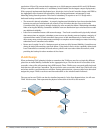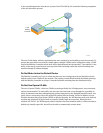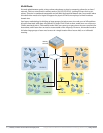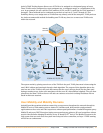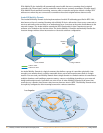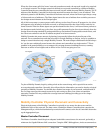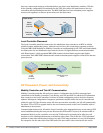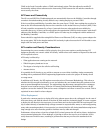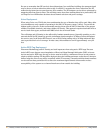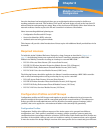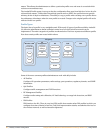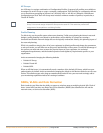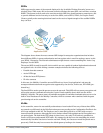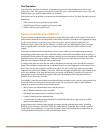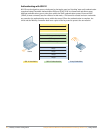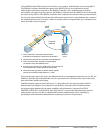
36 | Mobility Controller and Access Point Deployment Campus Wireless Networks Validated Reference Design Version 3.3 | Design Guide
Be sure to remember that RF travels in three dimensions. In a multi-floor building, the strongest signal
may be above or below rather than side-to-side. In all 802.11 networks the client, rather than the AP,
makes the decision when to roam from one AP to another. The RF designer can use this to advantage by
staggering APs from floor-to-floor. This will help ensure that client roaming behavior is predictable, and
can improve how ARM makes decisions about channel selection and power settings.
Voice Deployment
When using Voice over WLAN take into consideration the type of handset that will be used. Many older
voice handsets are only capable of operating in the 802.11b frequency range (2.4Ghz). To provide the
highest quality of service, Aruba recommends moving clients into the 802.11a band due to the greater
number of available channels, and using a higher AP density. This approach requires dual-radio APs to
service both client types, and dual-radio AMs to lock the air in both bands.
The cell design and AP density is also affected by handset manufacturers. Generally speaking, a voice
network should be RF planned to provide a minimum signal strength of -67dBm or better throughout
the service area. In the Aruba RF Plan tool, use a 150% overlap setting with a 54 Mbps minimum data
rate to provide this level of coverage. In most cases, this translates to an AP approximately every 60
feet.
Active RFID Tag Deployment
Placement Methodology and AP Density are both important when using active RFID tags. Because
Aruba’s RF Locate feature uses triangulation of Received Signal Strength Indication (RSSI) to locate
devices and active RFID tags, the tag or device must be heard by a minimum of three access points to
obtain a reliable reading. APs should be deployed along the building perimeter so that there is always a
defined edge the client or tag will be contained within. If necessary, external semi-directional antennas
can be used on these perimeter APs to direct the maximum signal towards clients and to reduce
susceptibility of the system to co-channel interference from outside the building.



